Photo

The Marriage and Controversy of King Alexander and Queen Draga
A Surprise Announcement
Amidst speculation about his marital prospects, King Alexander seemingly agreed to marry a German princess, leaving the arrangements to his father, Milan, and Emperor Francis Joseph of Austria. However, Alexander surprised everyone by marrying Draga instead.
Public Outcry
The Serbs, initially indifferent to Alexander’s romantic affairs, were outraged by his marriage to Draga, whom they viewed unfavorably. Rumors circulated about Draga’s past, tarnishing her reputation and fueling public animosity towards her. Regardless of the king’s actions, Draga was often blamed.
Ambition and Intrigue
Behind her royal title, Draga was a woman with ambitions, seeking to elevate her family’s status and secure a succession plan favoring her bloodline. Speculation arose about her purported pregnancy, but subsequent medical examinations dismissed it as impossible. Yet, rumors persisted, suggesting collusion between Draga and her sister to present a false heir Tour Bulgaria.
Growing Discontent
As tales of intrigue spread, discontent simmered among the Serbian populace. Many felt that Alexander and Draga had overstayed their welcome and must be removed from power. However, exile was the extent of the contemplated action, reflecting a desire for change without resorting to drastic measures.
A Tumultuous Era
The marriage of King Alexander and Queen Draga marked a tumultuous period in Serbian history, characterized by scandal, intrigue, and public outcry. Amidst accusations and rumors, the people of Serbia harbored growing discontent, signaling the need for change in their leadership.
0 notes
Photo

A Tranquil Journey to Avrat-Alan
Refreshing Change of Pace
The journey to Avrat-Alan on horseback offered a welcome reprieve from the jolting discomforts of a Turkish carriage traversing uneven roads. As we ascended into the mountains, a refreshing coolness enveloped us, accompanied by the inviting embrace of dense woodland canopies that provided respite from the relentless sun.
Idyllic Surroundings
Nature’s symphony unfolded around us, with bubbling streams emerging playfully from hidden nooks, reminiscent of joyful children rushing into the arms of their mothers. We found ourselves lingering leisurely in grassy clearings, where our horses indulged in the lush greenery, their contentment compelling us to delay our journey Private Guide Turkey.
Scenic Vistas
Upon reaching the summit of the foothills of the Balkans, we were treated to a breathtaking panorama. Stretching before us lay the vast expanse of the Maritza valley, home to Tatar Bazardjik, Philippopolis, and Adrianople. The eye wandered over miles of undulating plains, culminating in the majestic sweep of the Balkan foothills, delineating the boundary between the Maritza River and the Aegean Sea.
A Journey of Tranquility
Our horseback journey to Avrat-Alan not only provided a serene escape from the clamor of civilization but also bestowed upon us the gift of unparalleled natural beauty. Amidst the tranquil embrace of mountain breezes and verdant forests, we found solace and rejuvenation, cherishing each moment of our leisurely expedition.
0 notes
Photo
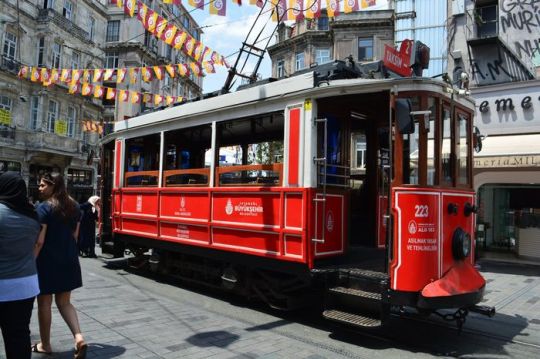
Invocation and Prayer
The religious leader, Nakib el §erif Efendi, commenced the ceremony by kissing the Sultan’s skirts and offering his prayer.
Oath and Allegiance
Kaymakam Pasha, the Admiral, and the Chief of the corps of halberdiers approached with the roll, standing to the right of the Sultan. The Sheikhulislam followed, taking his oath of allegiance, praying, and then joining the religious leader.
Ceremonial Gestures
Kaymakam Pasha, adorned in ceremonial attire, stooped and kissed the Sultan’s skirts, receiving applause. Upon the Sultan’s request for a repetition of the applause, it was granted. The Admiral, also applauded twice, stood beside Kaymakam Pasha and introduced forthcoming officials Istanbul Fun Tours.
Announcement of Accession
Following the ceremonies, the Chief Town-crier Agha was tasked with announcing the Imperial Accession to the throne from the four major mosques: Ayasofya, §ehzade, Süleymaniye, and Sultanahmet.
Ceremonial Protocol
During Sultan Mustafa Khan’s reign, officials took oaths in ceremonial attire, mirroring tradition. However, this time, the ceremony unfolded differently.
Rituals for the Departed Sultan
The late Sultan Abdulhamit I was taken from the Harem gate for ritual ablution performed by the Master Yazici under a baldachin. Upon the purse-bearer’s notification of protocol requirements, permission was granted for the necessary ceremonies. The Sheikhulislam, Kaymakam Pasha, and the Admiral paid their respects to the departed Sultan before departing themselves.
This account underscores the solemn rituals and ceremonial protocols observed during the transition of power and the mourning rites for the deceased Sultan.
0 notes
Photo

Investigation into Alleged Atrocities
False Claims of Atrocities
Kiani Pacha, tasked with investigating atrocities committed by the Baslii-Bazouks, made startling claims to Mr. Schuyler. However, upon investigation, it was discovered that some of these claims were entirely baseless. For instance, the alleged killing of the wife and daughter of the Mudir of Avrat-alan was found to be untrue, as the Mudir had no daughter, and his wife was unharmed. Similarly, reports of the murder of the Mudir’s wife in Otluk-kui were debunked, as there was no Mudir in the village during the unrest.
Disputing Accounts of Turkish Women’s Deaths
Of the twelve reported cases of Turkish women killed, only five were investigated, revealing that three were entirely unfounded. Without knowledge of the villages where the other seven incidents purportedly occurred, further investigation was impossible, leading to doubts about the accuracy of these claims. Additionally, the gruesome tale recounted by Edib Effendi about the mutilation of a Turkish girl was deemed pure fiction, lacking any evidence or credibility Bulgaria Tours.
Events in Panagurishti
In Panagurishti, also known as Otluk-kui, nine Turks and two Turkish women were reported killed over a period of nine to ten days. However, examination revealed that all but two women and one zaptieh were killed while armed, suggesting they were actively involved in confrontations. Around twenty prisoners were captured during this time, all of whom were treated well until the arrival of the Turkish army, which subsequently released them.
Corroboration of Accounts
The validity of these findings is supported by multiple accounts from different sources, including a schoolmistress in Panagurishti. Upon further investigation and comparison with various testimonies, the consistency of the accounts became evident. Furthermore, the Turks themselves, both locally and in Philippopolis, did not claim a higher death toll than what was reported.
The investigation into alleged atrocities revealed discrepancies and false claims regarding the deaths of Turkish women and other incidents. Through careful examination and corroboration of accounts, it was determined that many of these claims lacked credibility. This underscores the importance of thorough investigation and skepticism when assessing reports of violence and unrest.
0 notes
Photo

Broken Promises and Ongoing Hardships
A Grim Reality
In the aftermath of the devastation inflicted upon Raddovo, the challenges facing its inhabitants loom large. Once home to thriving families, the village now lies in ruins, its once bustling streets reduced to rubble. The return of its people brings not relief, but a daunting reality of destitution and despair.
Lost Livelihoods
The loss of livestock strikes a crippling blow to the community’s livelihoods. Out of approximately 320 pairs of oxen that once toiled in the fields, a mere thirty-three pairs have been returned. Such a paltry number is wholly insufficient for the monumental task of harvesting crops and securing sustenance for the coming winter Guided Turkey Tours .
Bleak Prospects
With the onset of winter fast approaching, the prospects for Raddovo’s residents grow increasingly dire. Without the means to gather their harvests or rebuild their shattered homes, they face the specter of destitution. The promises of assistance from Turkish authorities ring hollow in the face of stark reality, as aid fails to materialize and assurances prove empty.
Broken Promises
The assurances of help and support from Turkish authorities appear to be little more than empty gestures, designed to placate European scrutiny. Despite promises of livestock restoration and assistance in reconstruction, the villagers find themselves abandoned to their fate. Instead of aid, they are met with the cruel demand for tax payments, a bitter irony in the wake of their suffering.
A Desperate Situation
The imposition of hefty taxes on a community ravaged by violence and loss is a cruel injustice. The burden of such demands weighs heavily on the shoulders of Raddovo’s residents, pushing them further into the depths of poverty and despair. Faced with insurmountable obstacles and broken promises, their future grows increasingly uncertain.
As Raddovo grapples with the aftermath of tragedy, its people endure a harsh reality of hardship and abandonment. Despite their resilience, the road to recovery appears long and fraught with challenges. In the face of adversity, they cling to hope, but their plight serves as a stark reminder of the injustices that persist in the wake of conflict.
0 notes
Photo

Economic Challenges and Shifts Between the Wars
Economic Challenges and Shifts Between the Wars (1918-1941)
Post-World War I Industrial Landscape (1918-1920)
After World War I, Bulgarian industry comprised 1,544 enterprises with 55,717 workers and 5,083,000 leva of invested capital. The Stambolisky government took measures to eliminate grain speculation, fostered cooperatives, and created a consortium with a grain export monopoly. Labor conscription was introduced to facilitate significant projects like railroads, highways, and canals. Land redistribution aimed at providing poor peasants with agricultural opportunities. The establishment of new industrial enterprises and joint-stock companies marked a period of progress from 1920 to 1923, despite the global economic crisis.
Stabilization and Growth (1926-1930)
A period of stabilization occurred during 1926-1929 under Liapchev’s government. By 1930, industrial production had risen to 7,320,000,000 leva. Joint-stock companies proliferated, reaching 622 by the end of 1928, with substantial foreign capital investments. However, the worldwide depression of 1929-1933 impacted Bulgaria’s economy. Foreign trade, the gold backing of the lev, and reparations obligations were severely affected. The rural sector faced challenges, and the government struggled with economic adversity. The tobacco industry thrived, and legislation aimed at addressing unemployment and debtor liabilities was implemented Guided Istanbul Tour.
Economic Challenges and German Orientation (1933-1941)
The global economic crisis of 1937 added further challenges. Bulgaria’s foreign policy shifted towards Germany due to economic interdependence. Germany relied on Bulgaria’s agricultural produce, and Bulgaria needed the German market for agricultural exports and to acquire machine products. This economic partnership intensified as shown by the increase in export and import percentages to Germany between 1936 and 1939. By the beginning of World War II, Bulgaria’s economic dependence on Germany was significant, with 72.5% of imports and 70.2% of exports involving Germany in 1941. This economic situation persisted until the Soviet army crossed the northern frontier in 1944.
0 notes
Photo
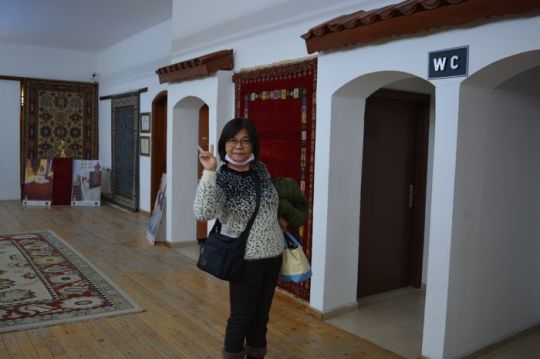
Economic Challenges and Shifts Between the Wars
Economic Challenges and Shifts Between the Wars (1918-1941)
Post-World War I Industrial Landscape (1918-1920)
After World War I, Bulgarian industry comprised 1,544 enterprises with 55,717 workers and 5,083,000 leva of invested capital. The Stambolisky government took measures to eliminate grain speculation, fostered cooperatives, and created a consortium with a grain export monopoly. Labor conscription was introduced to facilitate significant projects like railroads, highways, and canals. Land redistribution aimed at providing poor peasants with agricultural opportunities. The establishment of new industrial enterprises and joint-stock companies marked a period of progress from 1920 to 1923, despite the global economic crisis.
Stabilization and Growth (1926-1930)
A period of stabilization occurred during 1926-1929 under Liapchev’s government. By 1930, industrial production had risen to 7,320,000,000 leva. Joint-stock companies proliferated, reaching 622 by the end of 1928, with substantial foreign capital investments. However, the worldwide depression of 1929-1933 impacted Bulgaria’s economy. Foreign trade, the gold backing of the lev, and reparations obligations were severely affected. The rural sector faced challenges, and the government struggled with economic adversity. The tobacco industry thrived, and legislation aimed at addressing unemployment and debtor liabilities was implemented Guided Istanbul Tour.
Economic Challenges and German Orientation (1933-1941)
The global economic crisis of 1937 added further challenges. Bulgaria’s foreign policy shifted towards Germany due to economic interdependence. Germany relied on Bulgaria’s agricultural produce, and Bulgaria needed the German market for agricultural exports and to acquire machine products. This economic partnership intensified as shown by the increase in export and import percentages to Germany between 1936 and 1939. By the beginning of World War II, Bulgaria’s economic dependence on Germany was significant, with 72.5% of imports and 70.2% of exports involving Germany in 1941. This economic situation persisted until the Soviet army crossed the northern frontier in 1944.
0 notes
Photo
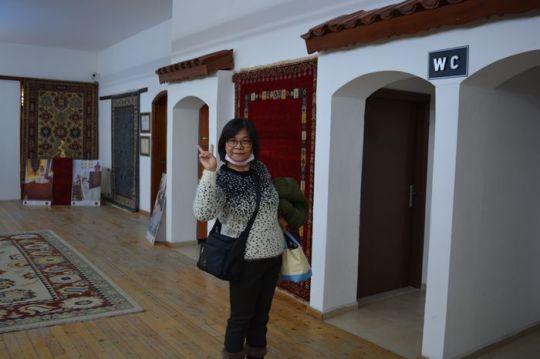
Economic Challenges and Shifts Between the Wars
Economic Challenges and Shifts Between the Wars (1918-1941)
Post-World War I Industrial Landscape (1918-1920)
After World War I, Bulgarian industry comprised 1,544 enterprises with 55,717 workers and 5,083,000 leva of invested capital. The Stambolisky government took measures to eliminate grain speculation, fostered cooperatives, and created a consortium with a grain export monopoly. Labor conscription was introduced to facilitate significant projects like railroads, highways, and canals. Land redistribution aimed at providing poor peasants with agricultural opportunities. The establishment of new industrial enterprises and joint-stock companies marked a period of progress from 1920 to 1923, despite the global economic crisis.
Stabilization and Growth (1926-1930)
A period of stabilization occurred during 1926-1929 under Liapchev’s government. By 1930, industrial production had risen to 7,320,000,000 leva. Joint-stock companies proliferated, reaching 622 by the end of 1928, with substantial foreign capital investments. However, the worldwide depression of 1929-1933 impacted Bulgaria’s economy. Foreign trade, the gold backing of the lev, and reparations obligations were severely affected. The rural sector faced challenges, and the government struggled with economic adversity. The tobacco industry thrived, and legislation aimed at addressing unemployment and debtor liabilities was implemented Guided Istanbul Tour.
Economic Challenges and German Orientation (1933-1941)
The global economic crisis of 1937 added further challenges. Bulgaria’s foreign policy shifted towards Germany due to economic interdependence. Germany relied on Bulgaria’s agricultural produce, and Bulgaria needed the German market for agricultural exports and to acquire machine products. This economic partnership intensified as shown by the increase in export and import percentages to Germany between 1936 and 1939. By the beginning of World War II, Bulgaria’s economic dependence on Germany was significant, with 72.5% of imports and 70.2% of exports involving Germany in 1941. This economic situation persisted until the Soviet army crossed the northern frontier in 1944.
0 notes
Photo
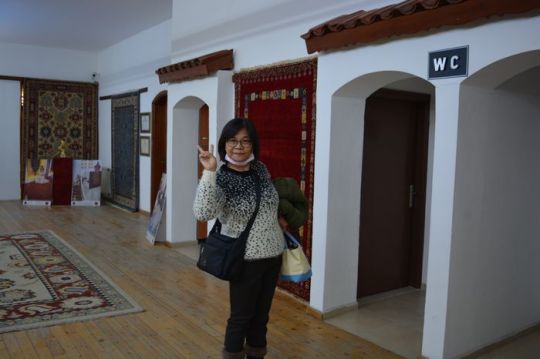
Economic Challenges and Shifts Between the Wars
Economic Challenges and Shifts Between the Wars (1918-1941)
Post-World War I Industrial Landscape (1918-1920)
After World War I, Bulgarian industry comprised 1,544 enterprises with 55,717 workers and 5,083,000 leva of invested capital. The Stambolisky government took measures to eliminate grain speculation, fostered cooperatives, and created a consortium with a grain export monopoly. Labor conscription was introduced to facilitate significant projects like railroads, highways, and canals. Land redistribution aimed at providing poor peasants with agricultural opportunities. The establishment of new industrial enterprises and joint-stock companies marked a period of progress from 1920 to 1923, despite the global economic crisis.
Stabilization and Growth (1926-1930)
A period of stabilization occurred during 1926-1929 under Liapchev’s government. By 1930, industrial production had risen to 7,320,000,000 leva. Joint-stock companies proliferated, reaching 622 by the end of 1928, with substantial foreign capital investments. However, the worldwide depression of 1929-1933 impacted Bulgaria’s economy. Foreign trade, the gold backing of the lev, and reparations obligations were severely affected. The rural sector faced challenges, and the government struggled with economic adversity. The tobacco industry thrived, and legislation aimed at addressing unemployment and debtor liabilities was implemented Guided Istanbul Tour.
Economic Challenges and German Orientation (1933-1941)
The global economic crisis of 1937 added further challenges. Bulgaria’s foreign policy shifted towards Germany due to economic interdependence. Germany relied on Bulgaria’s agricultural produce, and Bulgaria needed the German market for agricultural exports and to acquire machine products. This economic partnership intensified as shown by the increase in export and import percentages to Germany between 1936 and 1939. By the beginning of World War II, Bulgaria’s economic dependence on Germany was significant, with 72.5% of imports and 70.2% of exports involving Germany in 1941. This economic situation persisted until the Soviet army crossed the northern frontier in 1944.
0 notes
Photo

A Hub of Education and Luxury Shopping
Education City – Qatar’s International Academic Hub
The government of Qatar has invested significantly in transforming Doha into the education center of the Middle East, notably with the establishment of “Education City.” Encompassing 12,950 square meters in the capital city, Education City hosts students from 60 countries and accommodates 3,000 elementary, middle, and high schools, as well as universities. The city’s commitment to education is further evident in events like the ‘Doha Debates,’ where influential political and academic figures discuss critical issues in the Arab world. Additionally, the Heritage Library, housing 51,000 books, 600 antique maps, 2,000 manuscripts, and 6,000 photographs, aims to become a premier research center in the Middle East.
Glorious Shopping Centers – Doha’s Luxury Retail Experience
In Doha, transportation primarily relies on taxis and rental cars, with buses serving as the main public transportation option. The popular and affordable “karwa” cabs, easily identifiable by their green color, are readily available near malls. While waiting times may vary Guided Tours Turkey, scheduling a cab in advance is advisable. Alternatively, “limo” taxis, often found at upscale hotels, offer a more luxurious but pricier transportation option. Notable shopping destinations include Villaggio, a Venetian-themed mall boasting luxury jewelry stores, renowned Western brands, and even a Venetian canal for boat rides. Aspire Centre’s City Center-Doha, opened in April 2001, stands as Qatar’s largest shopping center, featuring a wide range of products, including jewelry and fragrances. Some malls host ‘family days,’ restricting entry to single men, although exceptions may apply to Western tourists.
0 notes
Photo
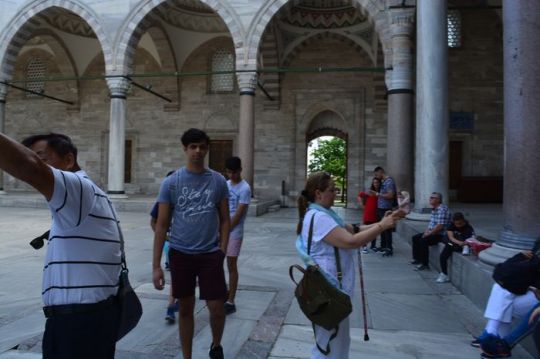
A Nation Held Hostage in Tamboli
A Reign of Fear and Desperation
This article unravels the grim reality faced by the residents of Tamboli, a community ensnared in a web of terror and despair. From the ominous figure of Galib Bey to the Kaimakam’s ineffectual authority, the people of Tamboli grapple with a nightmarish existence, haunted by the specter of past massacres and the looming threat of more violence.
A Reign of Fear
Galib Bey’s ominous presence looms large over Tamboli, striking fear into the hearts of both the populace and the supposed authorities. The Kaimakam, entrusted with upholding justice, appears equally afraid of this influential figure. The oppressive climate created by Galib Bey fosters an environment where seeking justice seems futile, perpetuating a cycle of impunity.
Recurring Nightmares of Batak
The scars of Batak, Otluk-kui, and Bazardjik cast a long and haunting shadow over Tamboli. Threats of more massacres, freely issued by the Turks, plunge the entire country into a perpetual state of dread. The justified fear of recurring violence, driven by the historical conduct of the Turks, perpetuates an atmosphere of continuous terror.
Plight of the Pillaged and Robbed
Amid the atmosphere of fear and the looming threat of violence, thousands of survivors find themselves not only mourning lost loved ones but grappling with the aftermath of pillaging and robbery. Homes reduced to ashes, possessions looted, and lives shattered—this is the harsh reality endured by those fortunate enough to escape the massacres with their lives Tour Bulgaria.
Broken Promises from Turkish Authorities
Despite promises of aid, restitution, and reconstruction, the Turkish authorities offer nothing but empty assurances. The cries for help fall on deaf ears as the beleaguered residents of Tamboli find themselves abandoned by the very entities meant to protect and support them. The broken promises exacerbate the desperation of those without shelter, sustenance, or hope.
A Plea for Liberation
As Tamboli remains shackled by fear, violence, and broken promises, this article concludes with a heartfelt plea for liberation. It calls attention to the urgent need for international intervention, demanding justice, aid, and reconstruction. The cries of Tamboli echo the broader call for humanity to stand against oppression and work towards a future where fear gives way to freedom and despair transforms into hope.
Breaking Free from the Chains of Despair
The narrative concludes with an epilogue envisioning Tamboli breaking free from the chains of despair. It paints a picture of a community rising from the ashes, empowered by justice, and rebuilding with the support of a compassionate global community. In this vision, Tamboli transforms into a symbol of resilience, inspiring hope for a brighter future.
0 notes
Photo
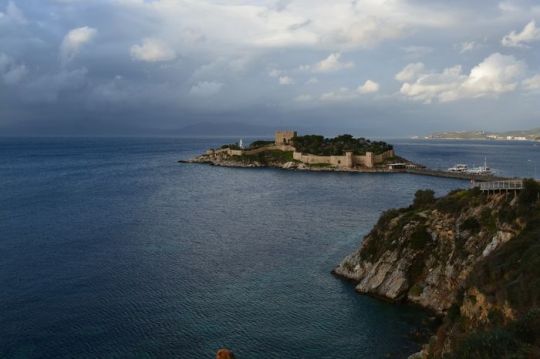
Unraveling the Threads of Rebellion
Avrat-Alan’s Fragile Resistance
Whispers of Dissent Avrat-Alan’s Reluctant Rebellion
In the annals of rebellion, Avrat-Alan emerges as a complex tableau where the echo of dissent met the stark reality of pragmatism. Unlike Otluk-kui, the resistance in Avrat-Alan lacked the fervor and unity that typifies a formidable uprising. Instead, it unfolded as a hesitant and fragmented endeavor, revealing a stark divide between the impulsive actions of the youth and the measured reservations of their elders.
The elder and more prudent segment of Avrat-Alan’s populace abstained from participating in the uprising, demonstrating a sagacious reluctance to engage in a futile endeavor. Their counsel fell on deaf ears as the impetuousness of the young men propelled them into a venture that their elders viewed with skepticism. This schism in generational perspectives delineates a community grappling with the cost-benefit analysis of rebellion—an internal struggle laid bare by the ensuing events Bulgaria Holidays.
The Unraveling Bubble Avrat-Alan’s Resistance in Retreat
As Hafiz Pacha’s forces approached Otluk-kui, a pivotal moment unfolded in Avrat-Alan—one that exposed the vulnerability of a rebellion built on shaky foundations. A substantial portion of the insurgents ventured out to reconnoiter, leaving the rest of the populace torn between fear of Turkish retribution and the hope of appeasement. In a surprising turn of events, the pragmatic majority, disenchanted with the ill-fated rebellion, rose against their youthful compatriots.
The insurgents who remained within Avrat-Alan found themselves confined, not by the might of Turkish forces but by the hands of their own disillusioned community. A desperate attempt to signal appeasement to Hafiz Pacha unfolded as the elders, recognizing the futility of resistance, sought to distance themselves from the impulsive actions of the rebels. The confinement of the insurgents within the konak, and the subsequent message to Hafiz Pacha, was a clear indication of the majority’s disapproval and their desire to disentangle themselves from a rebellion that held no promise.
The collapse of the rebellion, when confronted by the advancing Turkish troops, resembled the bursting of a fragile bubble. The uprising, built on the misjudgments of the youth and lacking the foundational support of the wider community, crumbled under the weight of its own impracticality. Avrat-Alan, in this moment, became a microcosm of the larger narrative—a cautionary tale of rebellion without collective conviction, where the fleeting aspirations of the young met the sobering reality dictated by the elders’ pragmatism.
0 notes
Photo
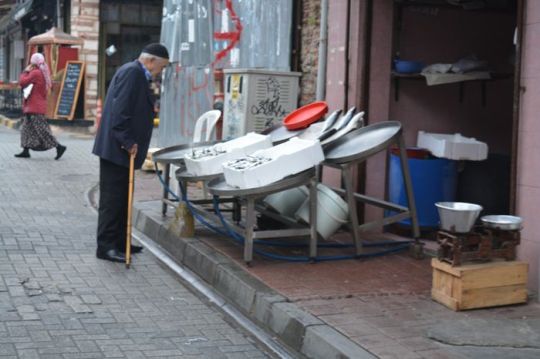
Temple of Diana at Ephesus
The aisles are divided into three bays corresponding to the main dome and two half-domes of the nave. The central bays (M,M) are screened off from the nave by lattice-work (N,N); the four green marble columns in the lower storey of either screen came from the Temple of Diana at Ephesus. The eight columns of porphyry separating the other bays from the four recesses are said to have been brought to Rome by Aurelian from the Temple of the Sun at Baalbek; they were given to Justinian by a patrician lady named Marcia, as a propitiatory offering for the salvation of her soul.
The capitals of all the columns are exquisite specimens of sculpture; and it is hard to tell what particular style of architecture they belong to, unless they are to be called Greco-Gothic. They are in imitation of a thistle, and are adorned with various monograms, chiefly those of Justinian and Theodora. According to an anonymous writer, they were gilt with real gold.
On the ceiling of the apse is a picture of Christ in the act of benediction, already referred to; the twelve medallions over the columns of the third aisle contained the bas-reliefs of the twelve apostles, which have been removed by the Turks. The black and white marble square within the basilica is supposed to be a model of the Temple of Solomon at Jerusalem.
The church was converted into a mosque immediately after the capture of Constantinople by the Turks, and Muhammad II. first said his prayers in it on Friday, 1st June, 1453. Mecca, towards which all Muhammadans turn their faces when praying, bearing S.E. from St. Sophia guided tours istanbul, prevented the Turks from placing the Mihrab (P) (altar), a stone or niche indicating the direction in which Mecca lies, where the Christian altar formerly stood, and necessitated the placing of the Mihrab between the eastern and southern windows, which consequently caused all the carpets and matting to be placed in the same direction, thus producing a strange architectural effect, by conveying the idea that St. Sophia is built with a slight slant.
Maafil-i-Humayun
Near the Mihrab is the Minber (Q) (pulpit), only used on Fridays, from which the Kiatib (reader) clad in a long red robe recites the Hutbeh or prayer for the Sultan. At St. Sophia, as in all other mosques which were formerly Christian churches, the Kiatib grasps a drawn sword as well as a Koran while reciting this prayer. The Maafil-i-Humayun (R), or the Sultan’s private pew, next to the Mihrab, on eight ancient columns, and surrounded by a shining sun, was erected by Messrs. Fossati during the last restoration of the mosque. The little gallery opposite the Minber is for the muezzins or chanters, who chant the service, and is called Maajil. Of the eight green shields high up, that to the right of the Mihrab bears the name of God; the one on the left the name of Muhammad; the remaining six bear respectively the names of the Caliphs, Abu – bekr, Omar, Hassan, Ali, Osman, and Hussein.
The two large alabaster jars for ablutionary purposes, on either side of the main entrance, were brought from the island of Marmora by Sultan Murad III. One of the two Mecca prayer-carpets on the walls, near the imperial pew and the Maafil, is said to have belonged to Muhammad II., and to have been used by him the first time he said his prayers in St. Sophia. On a stone in the wall of the south-east bay, just behind the Maafil, is the print of a bloody hand and its five fingers, ascribed by tradition to Muhammad II., the mark of a hand and five fingers having from the days of Murad I. been adopted as the ruler’s sign- manual, and being the origin of the imperial monogram. In the north-west part of the north aisle is a bronze-sheathed column with a hole in it, which Muhammadans believe to be always damp and to possess miraculous healing powers; sufferers put their finger into the hole and afterwards apply it to the afflicted part of their bodies, in the hope of a miraculous cure.
1 note
·
View note
Photo

RELIQUARY
20. RELIQUARY
Southeastern Europe or Asia Minor Second half of the 5th – 6th century Limestone 20 cm; w’ 15 cm; h. 17,5 cm
Accidental find from Obzor (former Gyozeken), Burgas region
NIAM – BAS, Inv. N 2047
Incised decoration on the lid, representing a blooming cross with ivy branches springing from its base.
21. CHALICE
Constantinople
Silver 14 x 14 x 10 cm
Stamps with imperial monograms:
Discovered accidentally in Nova Nadezhda (a sec-tor of Dimitrov grad), Southeastern Bulgaria, in 1965, in the area of a Medieval fortress
Haskovo, Museum of History, Inv. N A 3031
22. STAMP FOR THE CONSECRATED BREAD
Odessos or the region 5th – 6lh century Terracotta
10,3 x 4,2 cm
Greek characters: on the round surface – illegible; below – characters in positive: O KH and small caps below the cross:
An accidental find from Ossenovo, Varna region, as there are a Late Antiquity and Early Byzantine fortress with a church and a tomb with wall paint-ings from the 4th century
23. CENSER
5th – 6th century Bronze 9 x 4,5 cm Borets bulgaria tour, Plovdiv region
24. CYMBAL BELLS
2 pieces Constantinople (according to late Vassil Vassilev) Second half of the 6th century
Bronze
15,5 x 16,9 cm; 14 x 16 cm
Inscriptions in Greek: on one of them: + LEPTIOT nPELBTTEPOT + (To Presbyter Sergiu); on the other one – a monogram encrusted with a silver thread
Discovered together with two more similar bells and other artifacts in a large pithos in Augusta Traiana – Vereia – Star a Zagora, in 1907
The purification of Christ
Discovered in 1910 in Vinitsa – today a residential area of Varna (Kambur Cheshma)
Varna, Regional Museum of History,
26. LAMP
Late 4H1 – mid 5th century Bronze 15 x 31 cm Star a Zagora (Augusta Traiana – Vereia)
The lamp belongs to the single-holder type. The cover is decorated with a sculptured male head with a helmet facing a dolphin. The handle is shaped as a cross.
Byzantium, Augusta Traiana – Vereia (?)
6th century Bronze H. 46 cm
Discovered together with a large number of metal objects probably meant to be re-used in some of the workshops in the town during the late 6th century
28. MIRRA NEEDLE
5th – 6th century Bronze 21 cm Sadovets, Pleven region
29. MIRRA NEEDLE
5th – 6th century Bronze L. 19,5 cm Sadovets, Pleven region
30. CHANDELIERS
2 pieces, reconstructed Byzantium 6th century
31.5
Silver
H. approximately 60 cm; 70 cm The fragments were discovered in the fortress of Sadovets, Pleven region, together with many other precious artifacts mentioned in this catalogue.
The chandeliers are shaped as columns with a capital (one of them) and a vase (the other one), decorated with floral ornaments. The one with the capital bears the stamp of Emperor Justinian (527 – 565).
0 notes
Photo

Bulgarian Black Sea coast
The first international resort built on the Bulgarian Black Sea coast has 19 modern hotels with 3,000 beds, many restaurants and tavernas, bungalows with 200 beds and a camp site for 1,500.
The resort is situated 10 km north of Varna. Air temperature in July is 22-23°C and water temperature during the whole season is from 23 to 27°C.
There are volleyball and tennis courts, table tennis, scooters, water skis and pedalos.
On the beach not far from the Varna restaurant, is a large pool with mineral water with temperature of 48°C at source. Riviera Hotel, open all year round, also has a pool with warm mineral water.
The medical centre and chemist (tel, 6-10-31) is next to the bus stop in front of the Chernomorets Hotel. In emergencies doctors will make hotel calls turkey sightseeing.
The resort is connected by a regular bus service to Varna and Zlatni Pyassatsi.
There is a round-the-clock taxi service. Telephones: 6-52-19, 2-22-23, and 6-56-75.
The Post Office is next to the Chernomorets Hotel and is open from 7.00 a.m. to 10,00 p.m.
Most shops are north of the bus stop. The hairdresser’s is between Manastirska Izba Restaurant and Hotel Odessos.
Every hotel has a parking lot (cars can be repaired at the service shop near the filling station, or at the Balkantourist’s automobile service shop at Zlatni Pyassatst (tel 6-43-16). The filling station is open round the clock.
Places of interest
Manastirska Izba Restaurant, open from 7.00 a.m. to midnight. Bar open until 4,00 a.m. Tel 6-11-77.
Sedemte Qdai Restaurant, next to the Manastirska Izba. Open from 5.00 p.m. to midnight.
Chernomorets Taverna with an interesting programme by Bulgarian and foreign musicians. Open from 10.00 p.m. to 4 00 a.m. Tel 6-13-13.
In July and August there are concerts by folk ensembles from all over the country .
Souvenirs and other craft articles are sold in the little shops next ot the Chernomorets Restaurant and not far from the Manastirska Izba.
Detailed information can be obtained at the Tourist Service Bureau in Chernomorets Restaurant (tel. 6-13-01) and Roubin Hotel (tel. 6-10-20).
Five-star Varna Hotel, with 304 double rooms and 37 suites, radio and television and balcony in each room, looking Hole A nba iodo’ Hotel Moikva Hotel Vihren Hole! Kometa Hotel Velen Hotel Trapeziea Hotel Carevee Coiino Hotel Sofio Hotel Pe runiko ReStourant
Pomp a riMut Filling Station Restaurant Havana Resrourant Glod do Hotel-rettoo root International Hotel Vornen Hotel Krista Reltoy”Orit Kolo Hotel Modara ReitOorOnt PI Hotel Mftnoa Hotel Molina Hotel Jbgooo Hotel Igliko ©st
0 notes
Photo

Nowadays Veliko Tumovo
Nowadays Veliko Tumovo is one of Bulgaria’s university towns with many secondary and special schools, a theatre, an art gallery and museums.
Major historical monuments and tourist sites
Tsarevets — a fortified hill, towering over the Yantra fortress wall, the defence towers, Patriarch’s residence and As- sension Church and palace.
District History Museum
District History Museum is the country’s second largest. Displayed here are many monuments of Thracian, Roman, Byzantine, Slavonic and Bulgarian cultures.
Holy Martyrs Church (1230) with its famous stone columns with inscriptions by Khan Omourtag and Tsar Ivan As- sen III.
Church of St Dimiter is at the foot of the Trapezitsahiil.
It was in this church that Peter and Assen declared the 1185 Uprising against Byzantine domination.
Church of Saints Peter and Paul, built and painted in the 14th century.
The National Revival Museum in the Nikoli Inn.
Old Gurko Street is a typical Turnovo street. Most of the houses here were built during Ottoman rule. Of particular interest are Granny Mata’s house and Sarafka’s house.
Monuments; Velcho Conspiracy monument, erected in 1935 to commemorate the centenary of the uprising; Vassil Levskimonument; to those who died in the wars of 1885, 1912-1913 and 1915-1918.
Hotels: Veliko Turnovo, 2 Emil Popov St., 195 rooms, restaurant, day bar and night club cafe, free shop, hairdresser’s, indoor swimming pool, rent-a-car bureau. Tel. 3-05-71 sofia sightseeing. Etur, 4 Ivailo St., 7 floors, two stars, 12 suites, 128 beds; restaurant, night club, hairdresser’s, rent-a-car and information office. Tel. 2-68-51, Yantra, 1 Velchova Zavera St., two stars, 4 floors, 2 suites and 105 beds, restaurant, night club, cafe, information and rent-a-car office. Tel. 2-03-91.
Union of Bulgarian Motorists — 6 Tolbukhin St. Tel.: 2-14-69.
Some 50 km from Vehko Turnovo along E-85 is the pictu-resque town of Gabrovo. On the way is Dryanovo (pop. 11,0), situated on the banks of River Dryanovo. In the Middle Ages there was a Bulgarian fortress built on the plateau over the Dryanovo Monastery. In the Tryavna Pass in 1190 Peter and Assen defeated troops of the Byzantine Emperor Isaak Angel II and laid the foundations of the Second Bulgarian State. The mins of the Roman Diskoduraterra fortress are 7-8 km to the northeast. The town was most prosperous during the National Revival. It is the birth place of the great Bulgarian builder and architect, Master Kolyu Ficheto.
Tourist sights: The Kolyu Ficheto Museum — an original house built in traditional Bulgarian national style. Church of St Nikola was built by Kolyu Ficheto in 1851, The Lafchiev house 1840, is a masterpiece of National Revival architecture.
0 notes
Photo
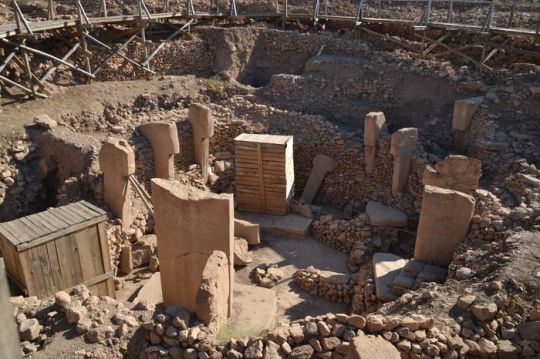
Under Byzantine rule
Late in the 10th century Bulgaria grew weak and after half a century of struggle fell under Byzantine rule in 1018. After a series of unsuccessful uprisings and rebellions, two brothers Assen and Peter roused the people to revolt in 1185, and in 1187, liberated part of the Bulgarian lands. The Second Bulgarian State was founded. Under Tsar Kaloyan (11971207) and Tsar Ivan Assen II (1218-1241) Bulgaria was the strongest state in Southeast Europe. A period of internecine struggle followed and many kings reigned in .rapid succession. The central power weakened in the second half of the 13th century and the Tatars invaded and plundered the country. The peasants9 plight Was difficult and their discontent led to an uprising (1277-1280) — the first successful antifeudal uprising m Europe. The rebels crowned their shepherd leader, Ivailo, a king.
Separatist tendencies gained momentum in late 14th century and the country was divided into three — The Tumovo, Vidin and Dobroudja kingdoms.
In 1352 Ottoman Turks invaded the peninsula and, taking advantage of the fragmented state of the Balkans, overthrew the states one after another city tours istanbul. Turnovgrad fell in 1383, followed by the Vidin kingdom in 1396 after which the Turkish domination lasted for five centuries.
Bulgarian National Revival
The 18th century was a period of Bulgarian National Revival, characterized by a struggle for national and religious independence and gave rise to great cultural upsurge. Paissi, a monk in Hilendar Monastery on Mount Athos is regarded as the father of the National Revival. In 1762 he wrote hisSlav- Bulgarian History which played an important role in awakening the people’s national awareness. The Ottoman Empire suffered great defeats in a number of successive Russo-Turkish wars (1768-1774, 1787-1791, 1806-1812). Bulgarian volunteers took part in these wars as well as in the Russo-Turkish Wars of 1828-1829.
In 1870, the struggle for church independence from the Greek Patriarchate in Constantinople was successful. The leaders in this struggle were Neophyte Bozveli, Ilarion Makariopol- ski and Petko Slaveikov.
After the Crimean War (1853-1856) the Bulgarian national liberation movement gained force on a new foundation. Vassil Levski went round the country setting up revolutionary committees to prepare for the uprising. In 1873 he was captured and hanged by the Ottoman authorities but preparations continued, and in 1876, the April Uprising broke out. Its cruel suppression aroused the indignation of the whole of Europe and an international conference was convened in Constantinople (1876-1877). The findings of the conference were inconclusive and in April 1877, Russia declared war on the Ottoman Empire. Bulgarian volunteers took part side by side with Russian troops. The San Stefano Peace Treaty was signed on 3rd March 1878.
0 notes